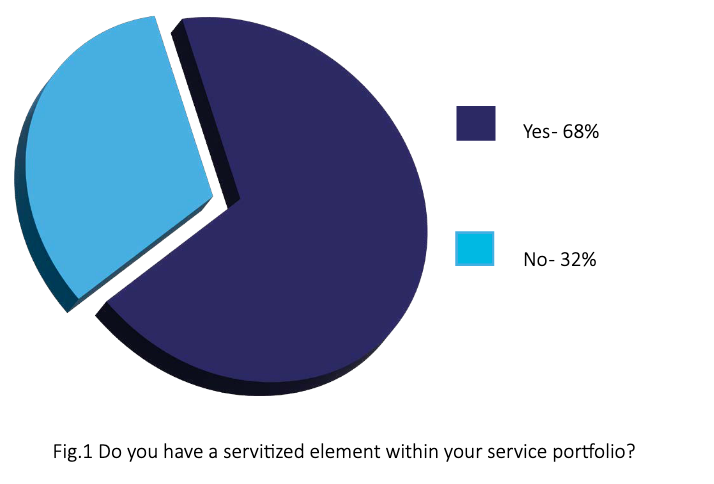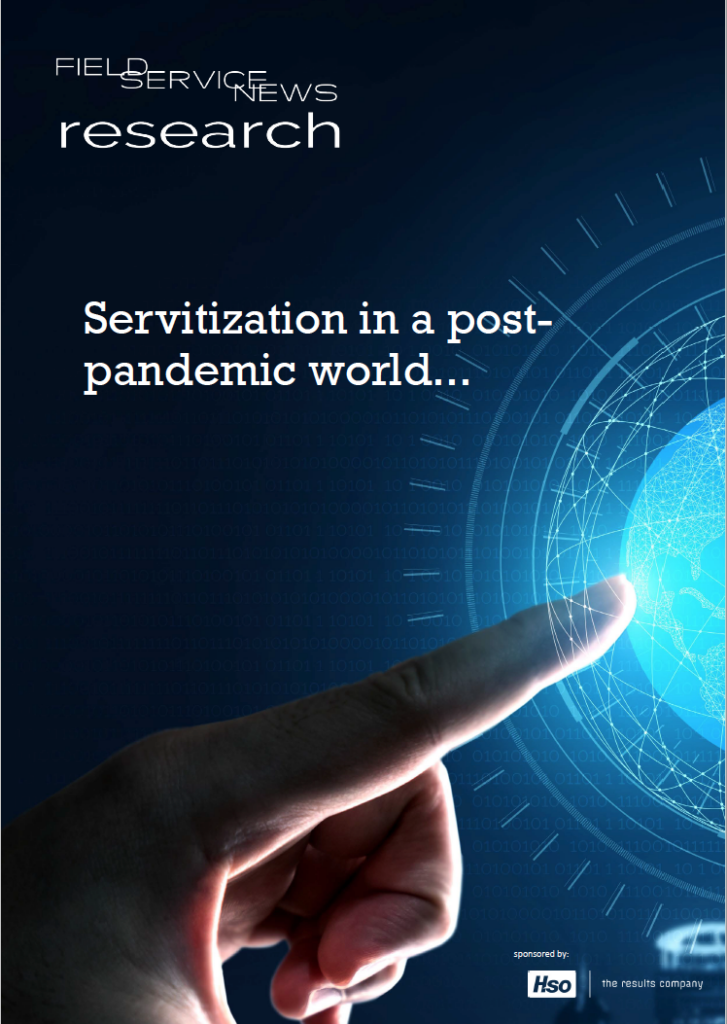Did the pandemic kill servitization or make it inevitable?
Did the pandemic kill servitization or make it inevitable?
Our approach in this study was to split our respondents into three groups which they self-identified within in the opening questions of the study.
These groups were:
- Those who identify that they have a servitized element within their service portfolio
- Those who stated they currently didn’t have a servitized element within their portfolio, but were actively working towards developing one
- Those who stated they currently didn’t have a servitized element within their service portfolio and were not intending to introduce one in the foreseeable future.
Within this report, we will be looking at the responses from those in the first two groups.
It is also important to note that before we began this study, we felt it was imperative to ensure all respondents were clear in their understanding of the topic.
Servitization itself has become something of a nebulous term in the last decade as it has become more prevalent within industry discussions. Therefore, to ensure that all respondents had a clear frame of reference, we outlined the following definition on the opening page of the study.
There are many different phrases used to define servitization, but for the purposes of this study, we shall use the definition within the Field Service News Glossary, which is thus;
“Servitization, or Advanced Services, is the final element in a three-tiered perspective of offering services.
The first layer of service is basic service, whereby a company offers goods and spare parts on a transactional level.
The second level of service is intermediate service, where product repairs, maintenance, overhauls, help desks, training, and condition monitoring are offered within a service contract agreement.
The final layer is advanced services. In some cases, this may be a fully outcome-based service model; in others, it might be more akin to a customer success model. The degrees of servitization vary both on the situation and customer and service provider maturity.
However, what is present in all servitized business models is a move away from transactional or contract-based sales towards true partnership. In the manufacturing sector, often CAPEX asset costs are often replaced by long-term subscription costs.
Within advanced services models, SLA adherence is replaced with guarantees of uptime, and perhaps most critically, there is a transfer of risk from the customer to the service provider, which is compensated by more profitable and longer- term agreements.”

 Data usage note: By accessing this content you consent to the contact details submitted when you registered as a subscriber to fieldservicenews.com to be shared with the listed sponsor of this premium content HSO who may contact you for legitimate business reasons to discuss the content of this briefing report.
Data usage note: By accessing this content you consent to the contact details submitted when you registered as a subscriber to fieldservicenews.com to be shared with the listed sponsor of this premium content HSO who may contact you for legitimate business reasons to discuss the content of this briefing report.
This content is available for FSN PRO members and also for a limited period for FSN FREE members. Please make sure you are logged in to access this content.
Not yet subscribed? Instantly unlock this content and more on our forever-free subscription tier FSN FREE
Join FSN FREE today!
Subscribe to our forever-free subscription tier FSN FREE by completing the brief form below and get instant access to this resource plus a selection of premium resources every month.
[pmpro_signup submit_button=”Get access now!” level=”1″ redirect=”referrer” custom_fields=”true” short=”true”]
The study findings show that 68% of companies within our response set stated that they had a servitized offering within their existing service portfolio
With all respondents given this clear definition, it would seem that despite the aforementioned potential exposure to risk that the pandemic illustrated, the continuing movement towards servitization as a prevalent mode of service contract within our industry remains in place.
Indeed, the study findings show that 68% of companies within our response set stated that they had a servitized offering within their existing service portfolio.

Of those who currently did not have such an offering, 72% were actively developing an offering.
Meanwhile, only 8% of companies stated that they didn’t have any servitized offerings in place and would not be introducing any such offerings in the foreseeable future.
As a useful frame of reference, we can reflect back to another study held by Field Service News Research in 2021 when we were still very much in the middle of the pandemic. At this point, we saw that 64% of companies currently included a servitized element within their service portfolio.
Of course, while the two studies are neatly separated around the pandemic in terms of timing, we must consider that while there may be some crossover in terms of response group, ultimately, they are two separate sets of data with too many variables for direct comparative analysis.
However, with both studies having a sizeable enough response group to produce a robust snapshot of the thinking in our industry, then we are able to draw a conclusion that the trend towards servitization certainly wasn’t particularly harmed by the pandemic.
Similarly, we must take into account that as the response sets in this study, like all Field Service News Research studies, are more populated by our readership. These readers are perhaps engaged in more sophisticated industry discussions than others in industry, and there may be a natural skew of numbers towards more sophisticated approaches to service strategies.
However, again the sheer volume of responses in favour of servitization would suggest that even if we are to factor in this weighting of the FSN audience as a representation of those in the industry at a leading edge of service thinking,
the movement towards servitization seems to continue to be growing at pace in this post-pandemic world.
As we continue to move through this first report from the study, in the next feature we will take a deeper dive into what are the approaches for those organisations taking this path and what are the drivers for them doing so.
Do you want to know more?
If you are already a subscriber you can access the report instantly on the ‘read now’ button below. If the button is showing ‘Join FSN FREE’ please log-in and refresh the page.
If you are yet to subscribe simply click the button below and complete the brief registration form to subscribe and you will get instant access to this report plus a selection of premium resources each month completely free.
This content is available for FSN PRO members and also for a limited period for FSN FREE members. Please make sure you are logged in to access this content.
Not yet subscribed? Instantly unlock this content and more on our forever-free subscription tier FSN FREE
Join FSN FREE today!
Subscribe to our forever-free subscription tier FSN FREE by completing the brief form below and get instant access to this resource plus a selection of premium resources every month.
[pmpro_signup submit_button=”Get access now!” level=”1″ redirect=”referrer” custom_fields=”true” short=”true”]

 Data usage note: By accessing this content you consent to the contact details submitted when you registered as a subscriber to fieldservicenews.com to be shared with the listed sponsor of this premium content HSO who may contact you for legitimate business reasons to discuss the content of this briefing report.
Data usage note: By accessing this content you consent to the contact details submitted when you registered as a subscriber to fieldservicenews.com to be shared with the listed sponsor of this premium content HSO who may contact you for legitimate business reasons to discuss the content of this briefing report.


